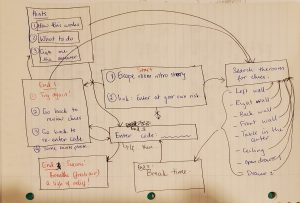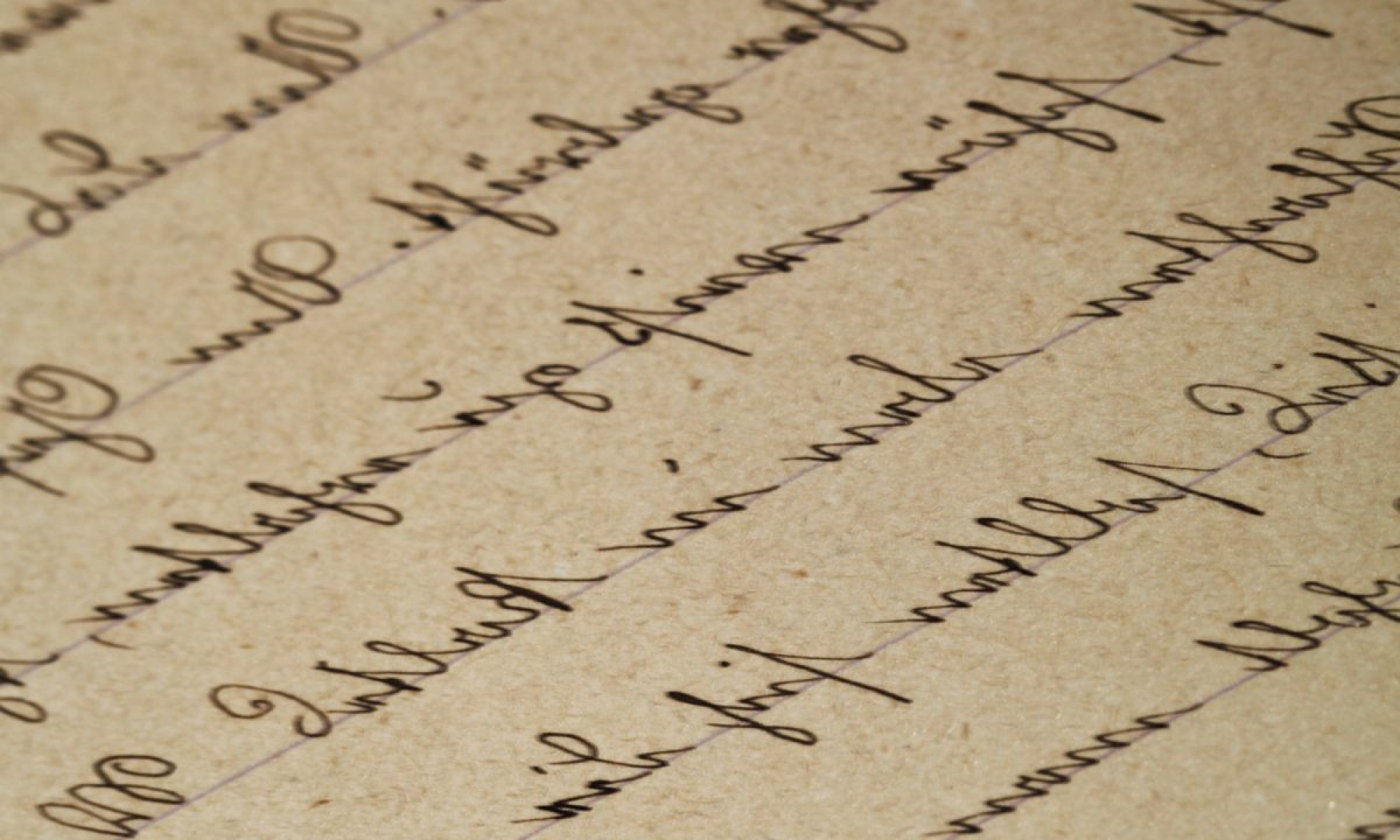Welcome to my Twine Escape Room! (Open in New Tab/Window to download).
Recently, I had assigned my grade 11 students a group project that involved creating a digital escape room on the topic of the Periodic Table. I got very creative and quite challenging puzzles, and they all had fun solving each others’ puzzles. When I began brainstorming ideas for my Twine story/game, I thought how perfect it would be to try an escape room on Twine! I had very minimal experience with Twine before – in the gaming summer institute, and had not really played around with it as much. I also have very little coding experience from my first year at UBC. However, I was very excited to try it out.
My very first instincts was to make a Harry Potter themed escape room. I quickly foresaw logistical issues with this, copyright being a big one. Also, I would have gotten VERY carried away with that. So I stuck with a more generic idea. I started brainstorming on paper first, because I wanted the links to be clear for me before I began making them on Twine. As Bolter (2001) states: “the physical unit of a writing technology helps to define the conceptual unit” (p.43). I wanted the conceptual idea of my escape room to make sense and this paper version provided the clarity to easily reproduce it on Twine. This is what one of my early planning sheets look like:

It is easy to see how network-like this looks already. The feature image above represents the actual network tree for the Twine story. As Miall and Dobson (2001) explain the non-linearity of hypertext and how it is “writing with places”, it is evident from these images how true this is.
After this initial organization, I made the clues and puzzles on paper first, at least a skeleton of them, then proceeded to make them all digitally. I had to be careful about any images I add, as they should not distract from the clue searching. I also decided against music (although a mysterious tune would have been nice) for the same reasons. I am a huge fan of puzzles and would have liked to make these more complex, but found myself limited by what Twine can offer. However, if I had invested more time, I’m sure I could have learned to embed other externally held puzzles.
The Main Room serves as a jumping off point and links to the locations of the clues. I did not number these links, nor did I put the clues in any particular order in those locations, because I wanted to make sure the “users are entirely free to follow links wherever they please” (Miall & Dobson, 2001). I tried to connect as many links back to previous pages to take advantage of the fact that “hypertext increases individual freedom”. One can see in the featured image above that most links are bi-directional. The player (for the most part) would not need to close the page and re-open it to play it differently.
I also learned how to get set-up a prompt for the final code, and then embedded that into an “if… else..”. clause to lead to either the Success! or Try Again pages. Overall, I had a lot of fun making this Twine and it helped me make further connections between writing, planning, puzzle solving and representing it all digitally. I do think I will make a Harry Potter themed escape room… eventually!
Hope you all enjoy this escape room. Please let me know if you have any feedback on how to improve this, or any ideas/suggestions (collaboration on HP maybe??)
—
References:
Bolter, J. D., & EBSCOhost. (2001). Writing space: Computers, hypertext, and the remediation of print (2nd ed.). Lawrence Erlbaum Associates. https://doi.org/10.4324/9781410600110
Miall, D. S., & Dobson, T. (2001). Reading hypertext and the experience of literature. Journal of Digital Information, Retrieved from https://explore.openaire.eu/search/publication?articleId=issn13687506::feae30569d02fbf0a7451897e74be20b


Hi Binal! Very cool. I like that you had to actually input an answer at the end to unlock the door. With Twine games, I always find that I click through the links in order from top to bottom and I wonder if younger generations who have grown up with hypermedia from birth might be less likely to take such a top-down book-like approach. Thanks for the fun journey 🙂
Thanks, Anne! Yes – initially I had a more narrative approach to the clue finding, with the links more spread out in the text. But then I thought that would make the reader click on them in a specific order and wonder if the order is a clue as well. Eventually I decided to just list them all and let the reader decide which order they want to click on them. It does not matter at all if you go top to bottom or not, but now I am interested to know how people navigated this space. Who went in order? Who decided to go random?
I really liked your game and the escape room approach you took with your Twine. Especially liked the idea of using the periodic table as a focus. I did a simple choose your own adventure story but your approach has inspired me to be a bit more creative. I am curious, did you try using this with your students after and if so, how did they respond?
Hi Meipsy,
Thank you! I’m glad you enjoyed it. I did not assign this one to my students. I had actually assigned them the task of creating periodic table themed escape rooms before Christmas, and those inspired me to take that approach with this task. But, now I know that it can be done, I will try making other content appropriate ones for them to try!